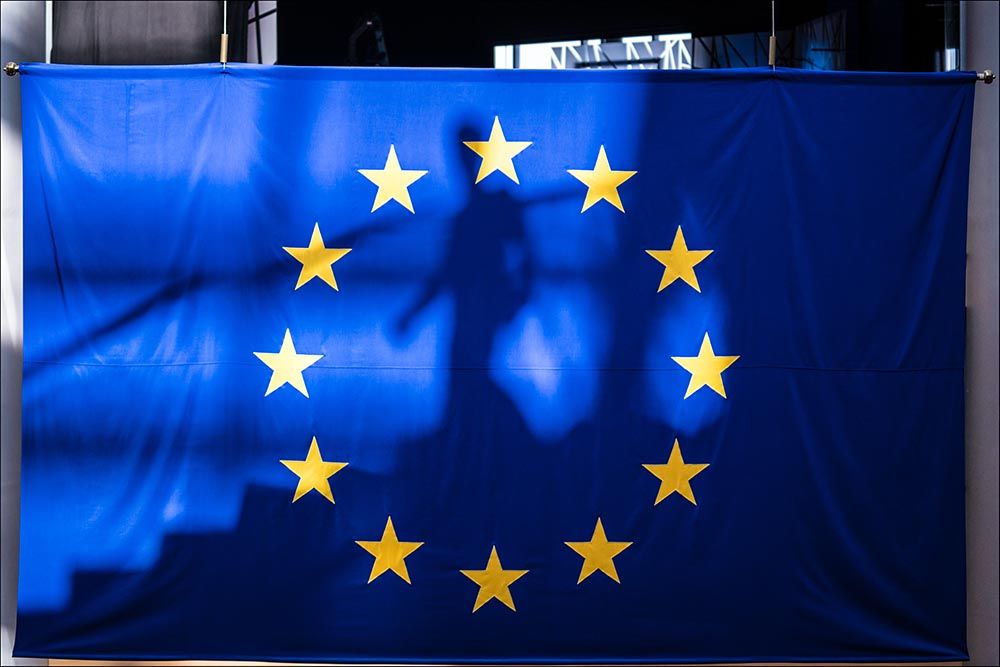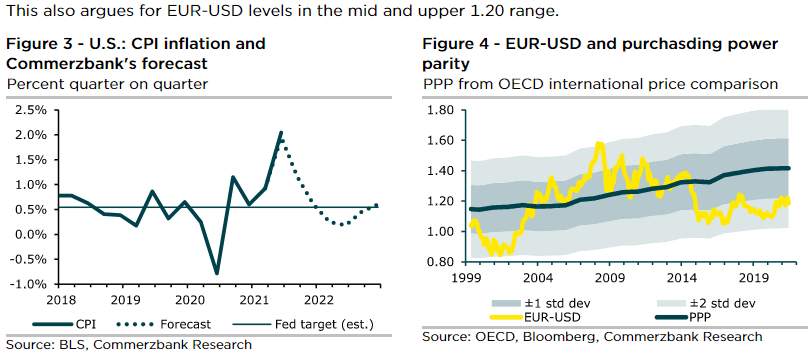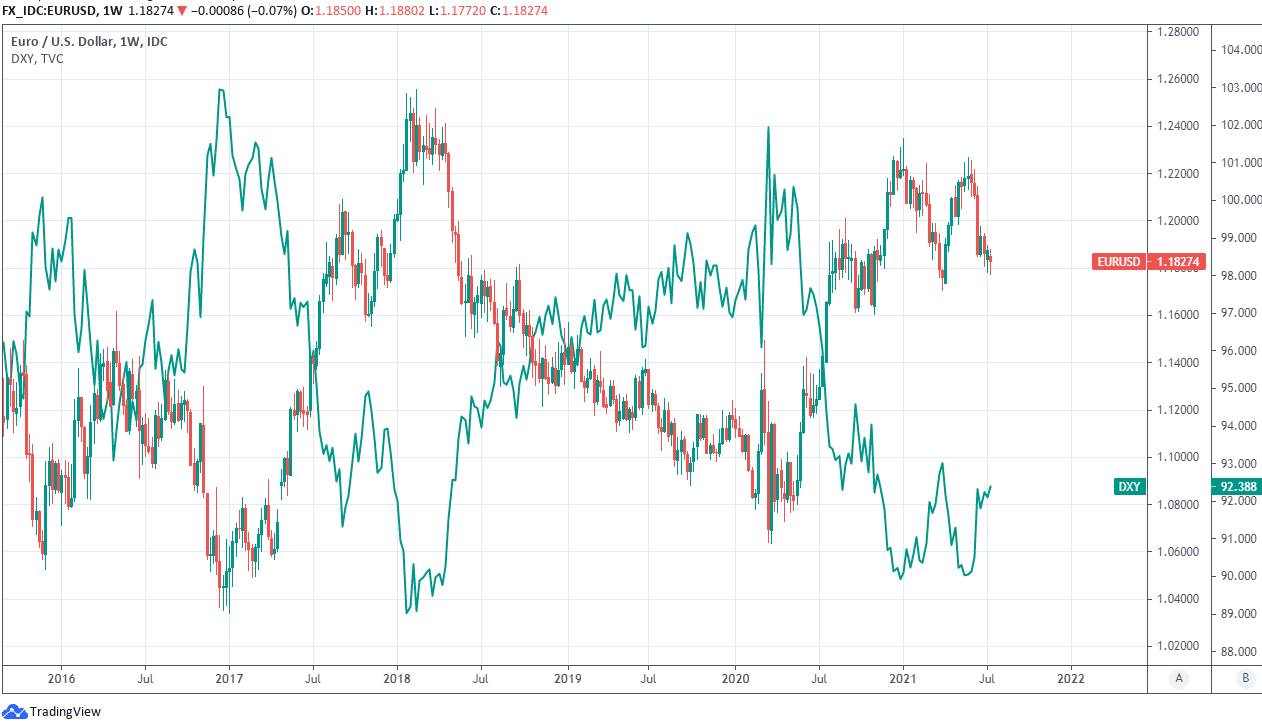Euro-Dollar Seen Targeting 1.1705 as USD's Offensive Keeps EUR in Retreat
- Written by: James Skinner
- EUR/USD target cut from 1.1770 to 1.1705 at Credit Suisse
- U.S. inflation risks keep USD on front foot & EUR on defensive
- Others say downside limited ahead of late-2021/2022 rebound

Image © European Union - European Parliament, Reproduced Under CC Licensing.
- EUR/USD reference rates at publication:
- Spot: 1.1811
- Bank transfers (indicative guide): 1.1390-1.1480
- Money transfer specialist rates (indicative): 1.1705-1.1730
- More information on securing specialist rates, here
- Set up an exchange rate alert, here
The Euro-to-Dollar exchange rate was ebbing from levels above 1.18 in the penultimate session of the week but is likely to probe below there over the coming days, and could see levels as low as 1.1705, according to new targets from Credit Suisse.
Europe’s single currency caught a breather last week when rising after the European Central Bank (ECB) announced a new inflation target and monetary policy strategy, which may have been less aggressive than some in the market anticipated and supportive of the Euro due to the lesser degree of additional monetary stimulus likely required in order to meet it rather than a more ambitious target.
But U.S. inflation figures showed annual price growth rising further above 5% on Tuesday and ultimately saw the single currency unravelling anew, leading to another foray beneath 1.18 and seemingly keeping the Euro-Dollar rate trajectory tilted to the downside for the short-term at least.
“Selected recent developments however appear to be reinforcing the perception of a “floor” in the USD against low-yielding currencies. These include further strength in US CPI data, and to a lesser extent, the ECB strategy review,” says Shahab Jalinoos, head of FX strategy at Credit Suisse.
“Expectations around the implementation of the latter in the upcoming ECB rate decision on 22 July create marginal further tactical EURUSD downside risk: we as such lower the target level of our outstanding EURUSD short position from 1.1770 to 1.1705,” Jalinoos adds.
Above: Euro-Dollar rate shown at daily intervals with Fibonacci retracements of 2020 recovery.
Secure a retail exchange rate that is between 3-5% stronger than offered by leading banks, learn more.
Analyst expectations for the Euro have been crimped since the middle of June when the Fed first indicated that it’s about to debate the appropriate time to end its quantitative easing programme and that it could lift interest rates sooner than was previously guided for.
Minutes of that meeting revealed last week that an announcement on tapering could come any time between July and year-end and that the outlook for borrowing costs is hinged on the extent to which inflation continues overshooting the Fed’s 2%-average target, although analysts at Commerzbank say that if indulged, market expectations of the Fed next year and in 2023 could soon prove to be a supportive influence the Euro-Dollar rate.
The bank forecasts a year-end finish around 1.20 for EUR/USD ahead of a move up to 1.26 by the time the curtain closes in 2022.
“The early "liftoff" now expected has been used by the market as an opportunity to revise down long-term Fed funds rate expectations,” writes Ulrich Leuchtmann, Commerzbank’s head of FX strategy, in a recent note.
Above: Commerzbank inflation forecasts and graph showing ‘fair value’ range based on purchasing power parity theory.
{wbamp-hide start}
{wbamp-hide end}{wbamp-show start}{wbamp-show end}
“We consider further significant USD appreciation to be unjustified at least if the scenario for inflation and key interest rate development priced in by the market does not change. EUR-USD around 1.18 should therefore be a range in which a medium-term market equilibrium may be expected under current conditions,” Leuchtmann adds.
Decade highs for U.S. inflation rates have gotten some in the market and many Americans themselves nervous, cultivating in the process an expectation among investors that the Fed will be compelled to lift interest rates toward the end of next year in order to curb rising prices.
For its part the Fed has stuck to its position that these inflation rates are temporary and that they’re likely to fade of their own accord over the coming year rather than require an interest rate response in order to be brought under control.
“I'd say we'll be able to see that. [pause] It won't take forever for us to be able to see that. And if we do see that inflation expectations are moving up and inflation is on a path to move well above our goals, and that it risks sending us off on a period of high inflation then we'll use our tools to guide inflation back down to 2%,” Fed Chairman Jerome Powell told Congress on Wednesday.
Above: Euro-Dollar rate shown at weekly intervals with U.S. Dollar Index.
“Honestly, it would be a mistake to do it at a time when we really do believe, and virtually all forecasters believe [inflation] will come down as the economy reopens, Honestly it would be a mistake to act prematurely," Powell said in response to Rep. Frank D Lucas of the House of Representatives’ Financial Services Committee.
The Fed cites among other things supply shortages of certain components for the manufacturing industries, capacity pressures in services industries resulting from pandemic-inspired layoffs for the current levels of inflation seen in the U.S. as well as statistical base effects resulting from the extremely low levels of inflation seen throughout much of 2020 when many economies were effectively closed.
Reduced prices in 2020 could make for high inflation in 2021 even with prices of goods and services merely returning to levels near their pre-pandemic norms but as time moves on the last year and its low price levels will drop out of the ‘base year’ comparison period, which would typically have the effect of reducing inflation in the very same way as it’s been raised this year; hence the Fed’s insistence that inflation pressures are “transitory.”
“The market assumes a much earlier and more aggressive "liftoff" for the Fed than for the ECB. Once both are corrected, a net USD-negative argument remains. By long-term valuation measures, the euro remains significantly undervalued against the dollar. Anything that reduces the difference between the Fed and ECB outlooks is therefore a EUR-positive argument,” Commerzbank’s Leuchtmann says.








